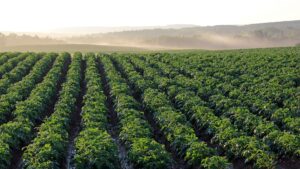
Seed Innovation and Protection Alliance executive director
These days, growing wheat is becoming an increasingly tough choice in the U.S. Wheat prices are low, making farm profitability difficult, while innovations in soybean and corn are allowing growers to cultivate these crops in areas where they never could be grown before. Yet, wheat production keeps increasing worldwide, keeping pace with the world’s ever-growing demand.
So how does a U.S. wheat grower compete in an increasingly competitive market while maximizing his profitability? Members of the Seed Innovation and Protection Alliance (SIPA) program, along with academic wheat researchers and marketing professionals, have worked together to identify best practices that can help wheat growers compete while increasing their farm profitability.
These best practices include:
1.Buying professionally produced seed;
2.Using best management practices;
3.Focusing on quality seed to produce high quality wheat; and
4.Using new innovations.
Buying Professionally Produced Seed
Professionally produced or certified seed has been inspected and verified against typically stringent quality standards and to ensure its identity. Buying professionally produced seed assures growers of at least the following:
1.Varietal purity;
2.Minimum germination percentage;
3.Freedom from weeds or noxious weeds; and
4.Increased yield potential.
A recent article from the University of Nebraska found that, while the upfront cost of bin-run seed is less than buying professionally produced seed, once you consider the increased yield advantage of professionally produced seed, the end cost is often less than bin-run seed.
Using Best Management Practices
It is often discussed, but it is always a good reminder to use best management practices to get the most profit out of your farm. This includes using professionally produced seed but also making sure a grower:
1.Selects the best varieties for his or her needs;
2.Uses appropriate seeding rates to ensure yield potential is maximized. This includes making sure you plant on the appropriate dates and at recommended planting depths for the variety and environment;
3.Uses the right fertilizer at the right place, in the right amount, at the right time; and
4.Uses the right harvest speed. Studies have found that even one MPH over can mean five to ten bushels per acre yield lost.
* Special thanks to Juliet Marshall of the University of Idaho for guidance on these best management practices.
Focusing on Quality Seed to Produce High Quality Wheat
The U.S. Wheat Associates reported that in 2016 record wheat production worldwide resulted in the largest world wheat supply on record. However, US Wheat Associates also reported that this record wheat was produced with lower than normal quality, leaving buyers searching for high quality wheat.
The U.S. is known for producing and exporting high quality wheat, with buyers from around the world willing to pay a premium for it. With that advantage, one of the best ways for U.S. growers to differentiate themselves on the world market is to use good quality seed known to produce high quality wheat, thereby focusing on wheat as a ‘food ingredient’ and not a bulk, ‘cheapest wheat’ commodity.
Using New Innovations
SIPA members from both universities and seed companies alike are constantly working to develop new wheat innovations that help growers produce high quality wheat while making the most of farm profits. Examples of new wheat innovations include:
·Limagrain Cereal Seeds has partnered with Bay State Milling Company to improve the nutritional qualities of seed and are breeding wheat that produces high fiber wheat flour, derived from high amylose wheat.
¬∑Limagrain Cereal Seeds, Colorado Wheat Research Foundation, Inc. and Albaugh, LLC, have partnered to develop the herbicide-tolerant CoAxium™ Wheat Production System, which provides a different system for weed control in wheat.
·Researchers at the Kansas State University have released the wheat streak mosaic virus resistance gene WSM3, which offers resistance to WSMV at higher temperatures and should be available from several sources in a few years.
·Multi-stakeholder consortiums are increasing the genetic diversity of wheat by incorporating traits from distant wheat relatives valued to growers. The new genetics can then be freely used by participants to pass along the benefits to farmers.
For more on the various innovations that are benefitting the seed industry and how to protect your innovations, please visit the SIPA website at www.seedipalliance.com or contact James Weatherly at jamesw@seedipalliance.com.













